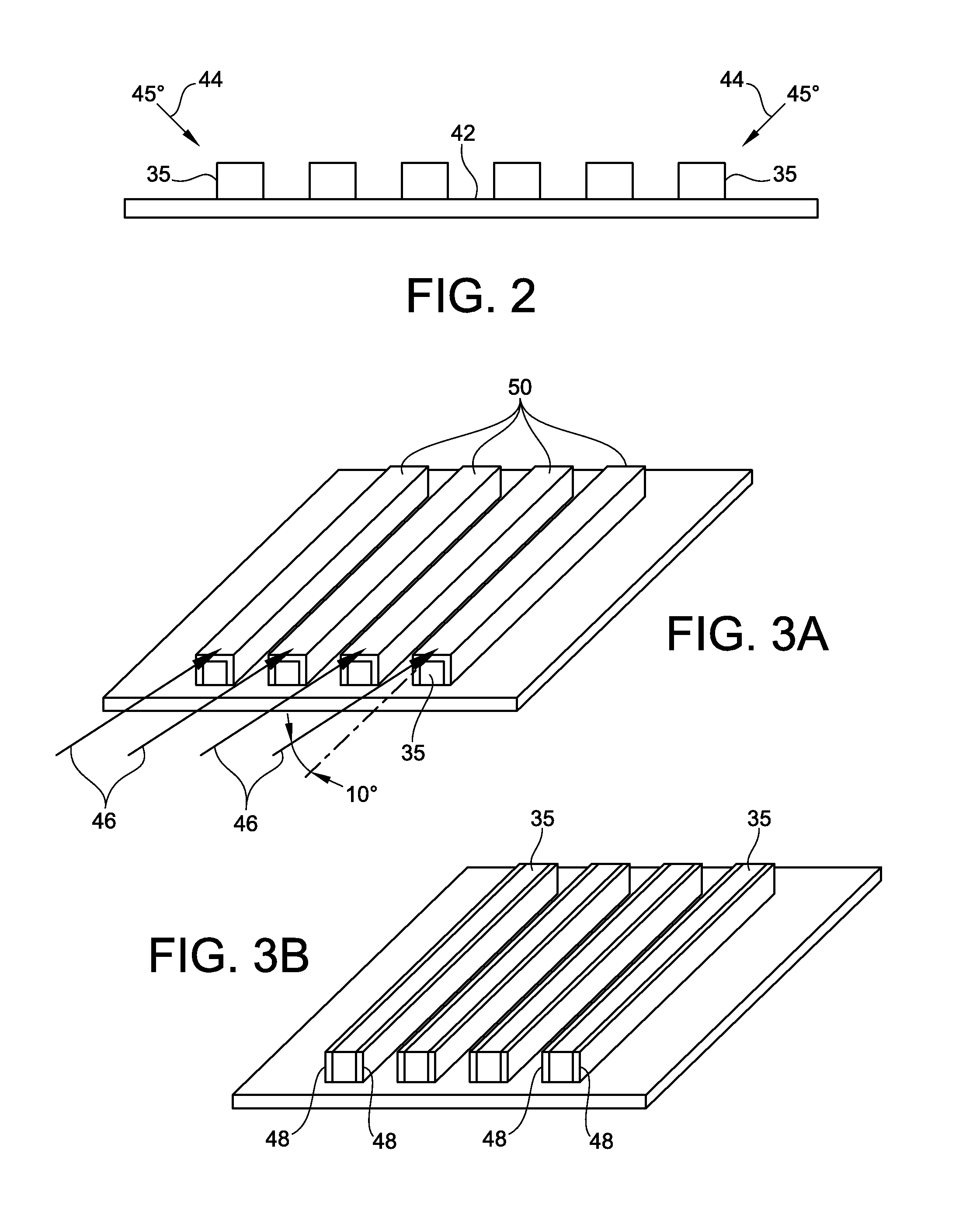Nanoscale High-Aspect-Ratio Metallic Structure and Method of Manufacturing Same
a high-aspect ratio, metallic structure technology, applied in the direction of paper/cardboard containers, containers, applications, etc., can solve the problems of high electricity consumption tariffs, high cost of solar cell panels, which have been continuously reducing for approximately 20 years, and achieve the effect of enhancing the performance of solar cells, leds and structures
- Summary
- Abstract
- Description
- Claims
- Application Information
AI Technical Summary
Benefits of technology
Problems solved by technology
Method used
Image
Examples
Embodiment Construction
[0044]FIGS. 1A-1F are schematic diagrams that illustrate the steps of a two-polymer microtransfer molding (2-P μTM) process used in manufacturing an embodiment of the invention. Such a two-polymer microtransfer molding process is described in U.S. Pat. No. 7,625,515, entitled Fabrication of Layer-By-Layer Photonic Crystals Using Two Polymer Microtransfer Molding, to Lee et al., and assigned to the assignee of the instant application, the teachings and disclosure of which are hereby incorporated in their entireties herein by reference thereto. In at least one embodiment, the nanoscale metallic structures described herein are configured to provide plasmonic light concentration to enhance light absorption in solar cells, while also reflecting high amounts of infrared radiation.
[0045]As shown in FIGS. 1A-F, the photonic structure is prepared in a multiple stage process. PDMS (polydimethylsiloxane) or other suitable elastomeric molds 30 cast from a master pattern out of a photoresist rel...
PUM
| Property | Measurement | Unit |
|---|---|---|
| Angle | aaaaa | aaaaa |
| Angle | aaaaa | aaaaa |
| Angle | aaaaa | aaaaa |
Abstract
Description
Claims
Application Information
 Login to View More
Login to View More - R&D
- Intellectual Property
- Life Sciences
- Materials
- Tech Scout
- Unparalleled Data Quality
- Higher Quality Content
- 60% Fewer Hallucinations
Browse by: Latest US Patents, China's latest patents, Technical Efficacy Thesaurus, Application Domain, Technology Topic, Popular Technical Reports.
© 2025 PatSnap. All rights reserved.Legal|Privacy policy|Modern Slavery Act Transparency Statement|Sitemap|About US| Contact US: help@patsnap.com



